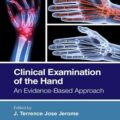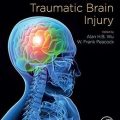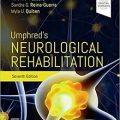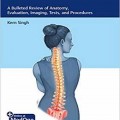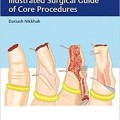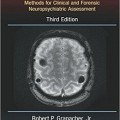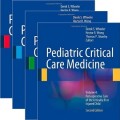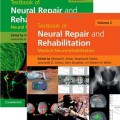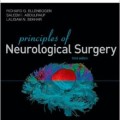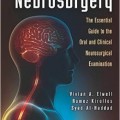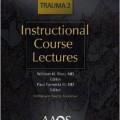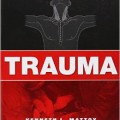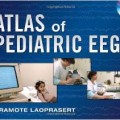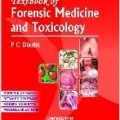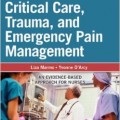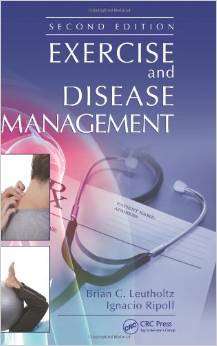دانلود کتاب آسیب مغزی تروماتیک: توانبخشی، درمان و مدیریت بیماری
Traumatic Brain Injury: Rehabilitation, Treatment, and Case Management, 4ed
In the last decade neuroscience has matured at a remarkable pace, shedding a far more exacting light on mechanisms of neurophysiology, pathophysiology of injury, neuroendocrinology, neuro-immunology, neuroplasticity, neuropharmacology and neurodegenerative processes. Individuals with acquired brain injury are treated earlier and now achieve far better recovery than in the past.
The fourth edition of this text constitutes a continuation of 20 years of coverage of traumatic brain injury, and broadens the discussion of acquired brain injury. Within TBI, the paradigm shift from an injury occurring at a point in time to a disease entity of a chronic nature is changing the discussion of diagnosis, management, treatment and outcome assessment. Disease specification that differentiates TBIs by the mechanism of injury, the exact nature of the injury, the extent of injury, presence of co-morbidities and their exact nature, gender, age, race, and genome are emerging as crucial. There was a time when cancer was an undifferentiated disease. Disease differentiation has consequently impacted diagnosis, treatment and outcome.
This text is intended to serve as a ready reference tool, contributing to the professional growth of each reader, and stimulating innovation and research. It also promotes the continued refinement in the management of diseases of acquired brain injury.
Features
- Presents algorithms that are independent of any platform but with solution included
- Demonstrates methods with instructor lecture slides and scripts
Contents
Chapter 1: Bioscience indications for chronic disease management and neuromedical interventions following traumatic brain injury
Chapter 2: The neurobiology of traumatic brain injury
Chapter 3: Repeat traumatic brain injury models
Chapter 4: Neuroplasticity and rehabilitation therapy
Chapter 5: Environmental enrichment: A preclinical model of neurorehabilitation for traumatic brain injury
Chapter 6: Neuroanatomy of basic cognitive function
Chapter 7: TBI rehabilitation: Lessons learned from animal studies about mechanismsr timing,, and combinatorial approaches
Chapter 8: Diet and exercise intementions to promote metabolic homeostasis in TBI pathology
Chapter 9: Disruptions in physical substrates of vision following traumatic brain injury
Chapter 10: Potential utility of resting state fMRI-determined functional connectivity to guide neurorehabilitation
Chapter 11: TBI and sensory sensitivity: Translational opportunities
Chapter 12: The neuroimaging challenges in hemispherectomy patients
Chapter 13: Clinical management of the minimally conscious state
Chapter 14: Neuropharmacologic considerations in the treatment of vegetative state and minimally conscious state following brain injury
Chapter 15: Clinical management of pituitary dysfunction after traumatic brain injury
Chapter 16: Neuretransmitters and pharmacology
Chapter 17: Pituitary dysfunction after traumatic brain injury
Chapter 18: Increasing physiologic readiness to improve functional independence following neurotrauma
Chapter 19: Assessment and management of mild traumatic brain injury
Chapter 20: Chronic traumatic encephalopathy
Chapter 21: Posttraumatic epilepsy and neurorehabilitation
Chapter 22: Evaluation of traumatic brain injury folio’wing acute rehabilitation
Chapter 23: Neuropsychology following brain injury: A pragmatic approach to outcomesr treatment,, and applications
Chapter 24: Neuropsychological intementions folio’wing traumatic brain injury
Chapter 25: The use of applied behavior analysis in traumatic brain injury rehabilitation
Chapter 26: Rehabilitation and management of visual dysfunction following traumatic brain injury
Chapter 27: Remediative approaches for cognitive disorders after TBI
Chapter 28: Principles of cognitive rehabilitation in TBI: An integrative neuroscience approach
Chapter 29: Management of residual physical deficits
Chapter 30: Undertaking vocational rehabilitation in TBI rehabilitation
Chapter 31: Contribution of the neuropsychological evaluation to traumatic brain injury rehabilitation
Chapter 32: Neurobehavioral consequences of mild traumatic brain injury in military service members and veterans
Chapter 33: Issues in aging following traumatic brain injury
Chapter 34: Children and adolescents: Practical strategies for school participation and transition
Chapter 35: Long-term discharge planning in traumatic brain injury rehabilitation
Chapter 36: Patients’ rights and responsibilities, health care reform, and telehealth: Ethical considerations
لینک کوتاه : https://bookbaz.ir/?p=66510
نویسنده : Mark J. Ashley , David A. Hovda
ناشر : CRC Press; 4 edition
سال انتشار : 2018
زبان کتاب : انگلیسی
نوع فایل : PDF (نسخه اصلی)
تعداد صفحات : 785
(ISBN) شابک : 1498710298
قیمت کتاب درآمازون : $186.07
حجم فایل : 36 MB










